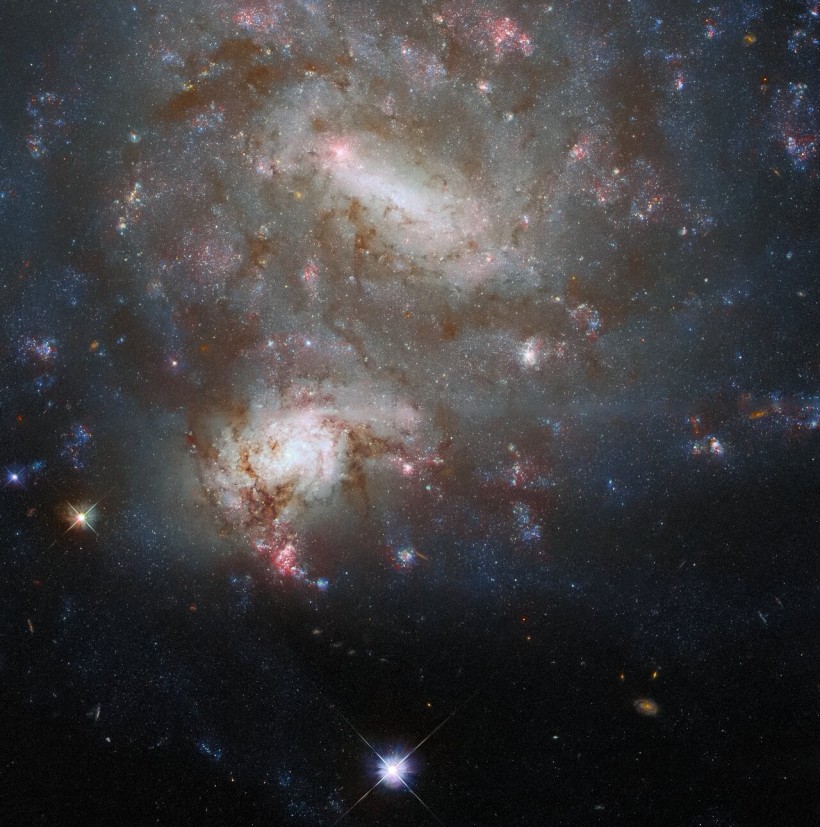So close, and yet, so far.
The National Aeronautics and Space Administration (NASA) recently captured what seems to be like two galaxies being side-by-side of each other using the Hubble Space Telescope. The galaxies are, in fact, light years away from each other, per the European Space Agency (ESA).
Details on the 'Twin Galaxies'

The two galaxies in the photo, NGC 4496A and NGC 4496B, are said to be "twin galaxies" and can be found in the Virgo Constellation, 315.74 light-years away, according to Universe Guide. These two galaxies were also discovered by German-British astronomer William Herschel, the man who discovered Uranus, according to NASA, and "The Lost Galaxy", NGC 4535, per a separate iTech Post article.
However, the chances of them overlapping anytime soon is close to zero. This is due to the distance between the two galaxies.
The galaxies are actually light years away from each other despite appearing to be overlapping. The ESA reports that NGC 4496A is 47 million light-years away from Earth while NGC 4496B is 212 million light-years away from our home planet. With these distances, we can find out how far apart the galaxies are from each other using the Pythagorean Theorem.
Read Also: John DiMaggio Accepts Bender Role: Fans React to 'Futurama' Revival
The result is quite the distance - the two galaxies are at least 206 million light-years away from each other. This huge distance means there is no chance of them being at each other's side like in the picture.
So why do these galaxies look like they're overlapping?
A Chance Alignment
Sci-News reported that the overlap is caused by a chance alignment of the two galaxies, causing them to look as if they're at each other's side through the Hubble space telescope.
Hubble astronomers said that galactic alignments such as the one NGC 4496A and 4496B are currently having, provides them with the "opportunity to delve into the distribution of dust in these galaxies."
However, the dust in these galaxies has come with problems that could hinder astronomers' observations and research. Hubble astronomers said that while galactic dust adds to the beauty of astronomical images, it absorbs starlight, which is critical to optical telescopes, per Herschel Space Observatory. The result of this starlight absorption makes the universe look darker.
Despite the hindrance, once astronomers switched to infrared cameras, these galactic dust became an important part of a number of astronomical processes. One of these processes involves finding out the cosmological distance of planetary bodies using galactic dust.
"By carefully measuring how starlight from background galaxies is affected by dust in intervening galaxies, we can map out where the dust is in the foreground galaxy's spiral arms," Hubble astronomers said.
This process is possible using galactic dust reddening - the process by which galactic dust shifts the wavelength of starlight to longer ones.
Related Article: NASA Hubble Image Shows Epic View of 2 Close Galaxies 200 Million Light-Years Away From Earth! [See Photo Here]














